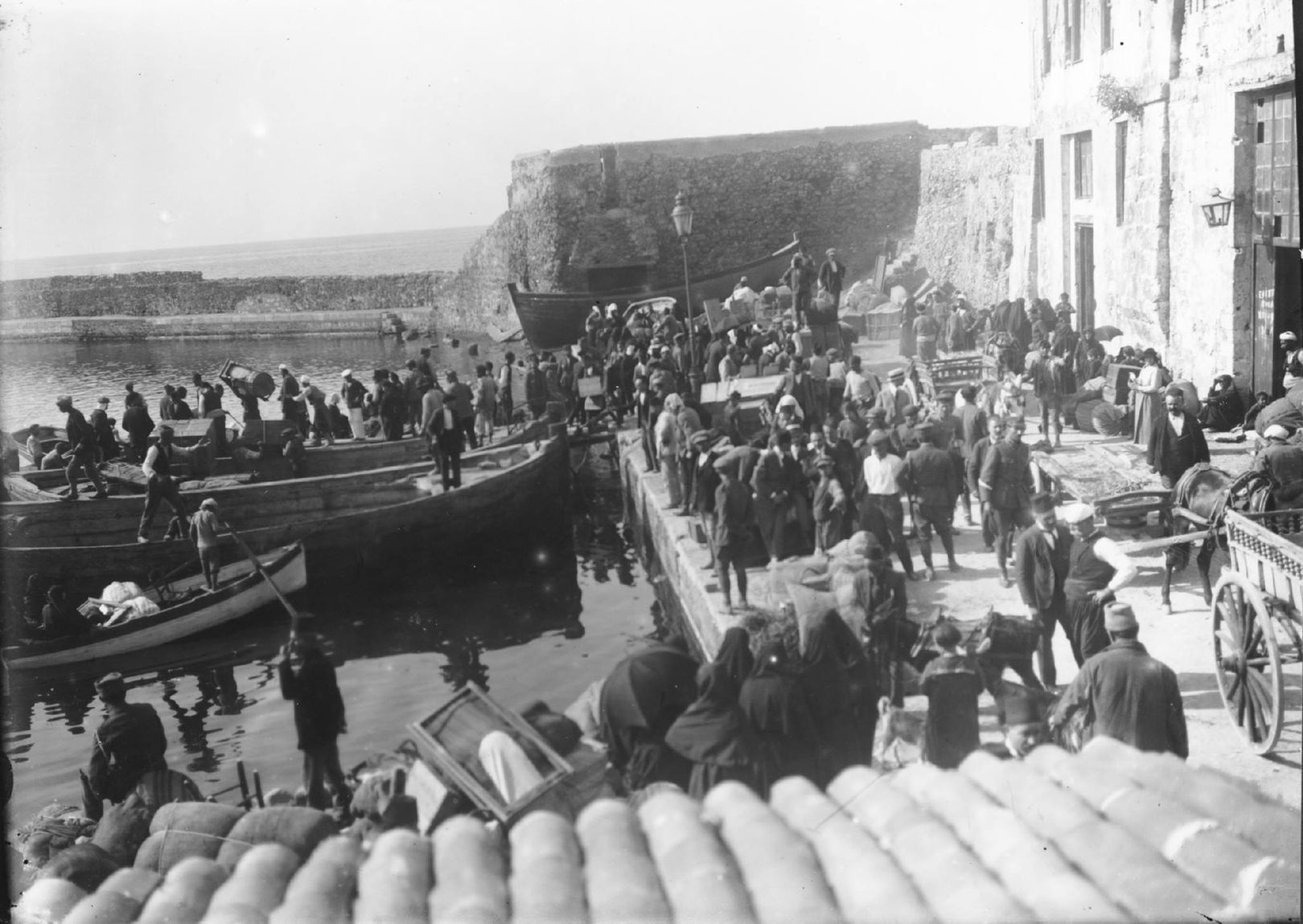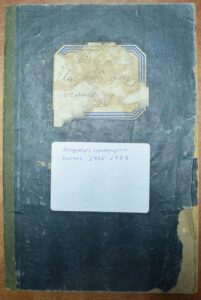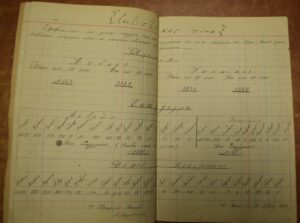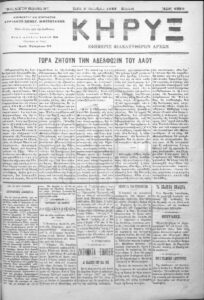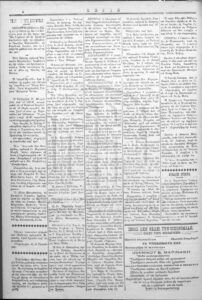What did urban refugees do for a living?
Full Description
The Book of Refugee Statistics for the island of Crete, which can be found in the General State Archive – Historical Archive of Crete, contains a census of the refugees who had arrived in the Prefecture of Chania signed by the Prefect in 1922. Apart from the number of refugees, the census documents the refugees’ professions organised by gender. Most men stated that they were farmers and workers, some were merchants, while other, more specialised professions, like teachers, shoe makers, blacksmiths, etc. were much rarer. Among women, housework was by far the most common occupation, but there was also a large number who stated that they were workers and servants. Their professions reveal the job sectors where female specialised labour was more common: seamstresses, weavers, embroiderers, rug makers, etc.
These data on refugees in Chania are consistent with the conclusions drawn from the relevant literature about refugee employment in Greece. On the one hand, it is well documented that industry, manufacturing and construction were sectors which absorbed high numbers of refugee labourers who lived in the cities and, most probably, a large portion of those identifying as ‘workers’ in the census worked in these sectors. However, this professional group was characterised by a high degree of differentiation. Research has shown that the refugees who were employed as industrial workers, especially in the big cities, enjoyed relative job security. In contrast, those who constituted the group of ‘day labourers’ did various odd jobs and changed employers regularly. In fact, they even moved from place to place looking for employment.
On the other hand, many of the new arrivals chose to engage in commerce, which was the third most common profession in the Chania census. Whether as travelling vendors, small shop owners or wholesale merchants, a large number of refugees turned to the tertiary sector in search of employment. Some had previous experience and the necessary funds to invest in a new business, while others chose this route for the exact opposite reason, namely the minimal capital investment required to go into some types of commerce.
The literature makes special mention of the rug making sector which experienced a temporary boom after the arrival of the refugees in Greece, boosted by supportive state policies and the very low cost of female labour. According to the census, several women in Chania specialised in this craft.
We can also find the first ads placed in the local press by seamstresses looking for clients: ‘Dressmaker (seamstress), refugee from Asia Minor, is looking to work with families…’. ‘The artist dressmaker Mrs. Maria Tseliou, refugee, […] undertakes the tailoring of women’s dresses according to the latest fashion trends…’.
Bibliography
Nikos Andriotis, Refugees in Greece 1821-1940. Arrival, care, rehabilitation, Hellenic Parliament Foundation, Athens 2020.
Kostas Katsapis, ‘The Refugee Issue’ in A. Liakos (ed.), 1922 and the Refugees. A new perspective, Nefeli, Athens 2011, pp. 125-169.
Christos Chatziiosif, ‘The refugee shock, the constants and transformations of the Greek economy’ in Ch. Chatziiosif (ed.), History of Greece in the Twentieth Century, 1922-1940: The Interwar, vol. 2.1, Vivliorama, Athens 2002, pp. 8-57.
